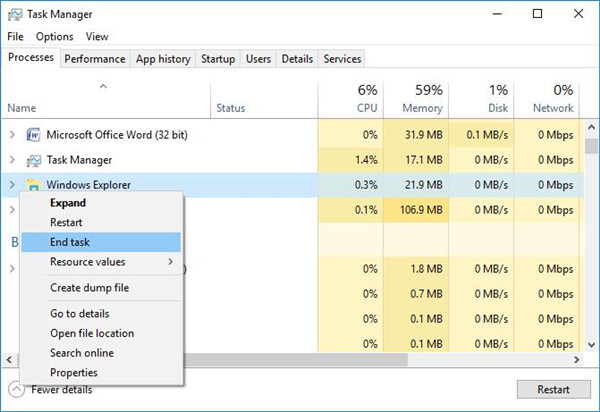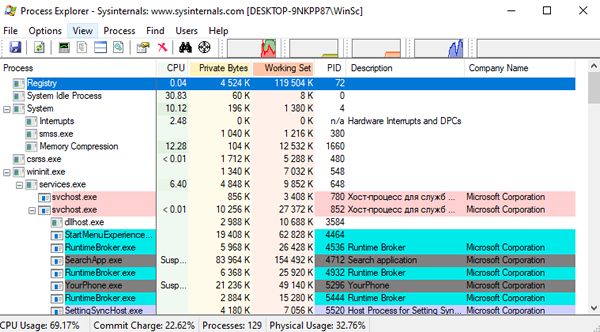

- PROCESS EXPLORER FOR WINDOWS 10 HOW TO
- PROCESS EXPLORER FOR WINDOWS 10 WINDOWS 10
- PROCESS EXPLORER FOR WINDOWS 10 FREE
And there are cases where you will have a program window or system dialog but cannot identify the underlying process. Some programs run several processes at once which means if you want to terminate the application completely you will have to kill all those processes.
PROCESS EXPLORER FOR WINDOWS 10 HOW TO
But today we'll also be covering how to kill a process with PowerShell, how use the taskkill command in Command Prompt, how to find a process ID with Process Explorer (Microsofts ooptional advanced Task Manager) and using a two-click-method via a task bar button.ĭifferent methods to kill a process for different needs The most common way in Windows to terminate a process is through Task Manager. However, it's worth noting that terminating a specific application process can still have knock-on effects on the rest of the program's functions if they rely on it. There are various ways to kill a process, but all of them make use of an application's PID (Process ID), a unique identifier that ensures only the correct one is terminated. Identifying and killing a process of single windows and background apps
PROCESS EXPLORER FOR WINDOWS 10 FREE
Terminating the task will force it to close and free up your system for normal functioning. At times, apps can refuse to close, get stuck on a blank screen, or suddenly consume a lot of system resources.
PROCESS EXPLORER FOR WINDOWS 10 WINDOWS 10

You can start, stop, restart or even change the permissions of the Spooler service from the Services tab:īack on Process Explorer’s main screen, summon the Lower Pane ( View > Show Lower Pane) for some serious detective work. For example, here is what is shown for spoolsv.exe, the Windows Print Spooler: All Windows Services run under the wninit.exe > services.exe branch:ĭouble-clicking an entry allows you to dig into a specific process. The interface automatically refreshes itself every few seconds to highlight processes as they come and go. When launched, Process Explorer shows a colorful tree of all the active processes. Think of it as the “Task Manager on steroids”, with the ability to show all processes, threads, handles, and of course, Windows Services running on your PC. If you want to understand what’s really going on with the programs on your computer, then look no further than Microsoft’s excellent (and free) Process Explorer.


 0 kommentar(er)
0 kommentar(er)
